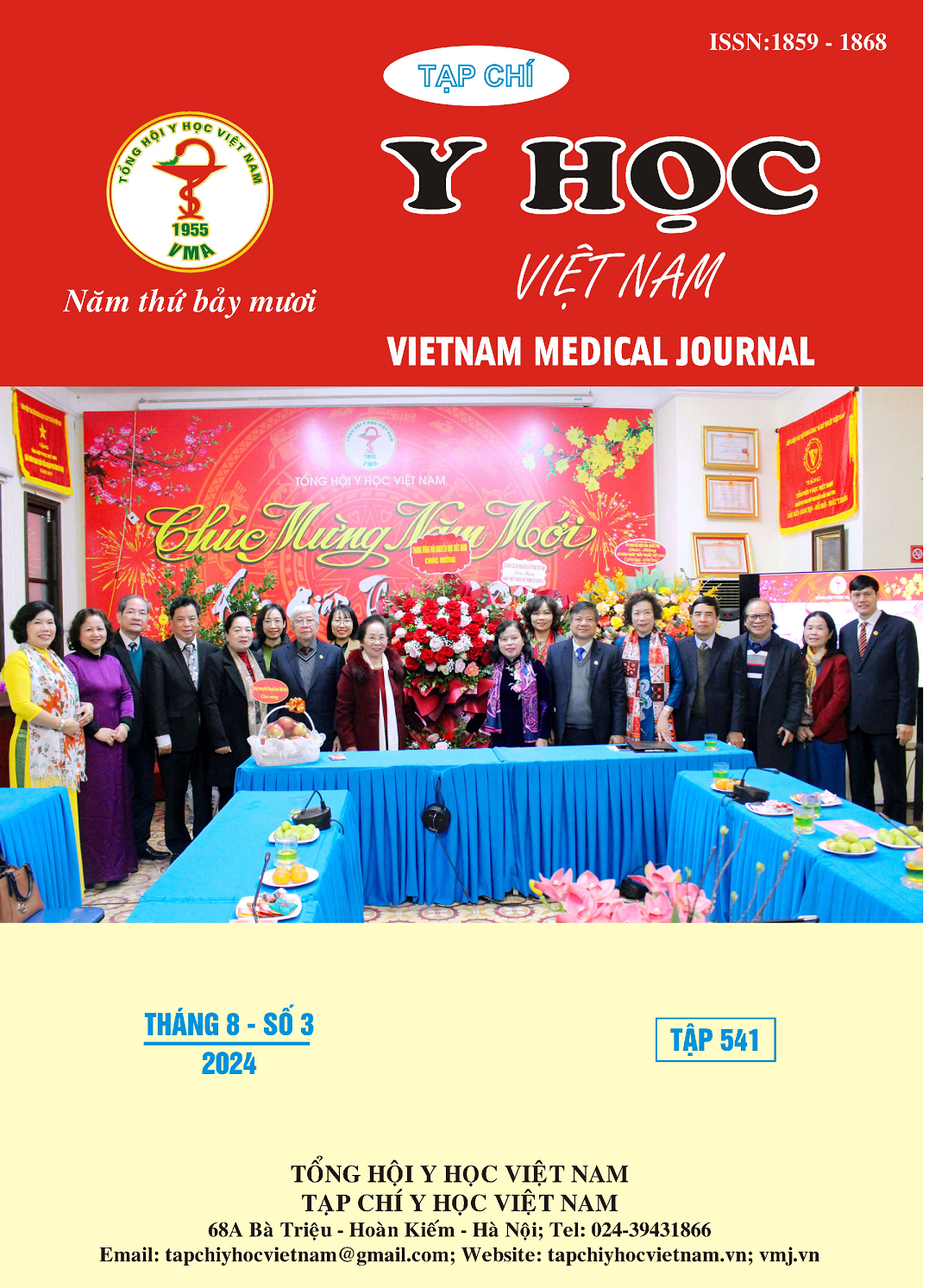PHẪU THUẬT CẤY ỐC TAI ĐIỆN TỬ Ở NGƯỜI LỚN MẤT SỨC NGHE SAU NGÔN NGỮ
Nội dung chính của bài viết
Tóm tắt
Mục tiêu nghiên cứu: đánh giá kết quả phẫu thuật cấy ốc tai điện tử ở người lớn điếc sau ngôn ngữ và mô tả một số nguyên nhân gây điếc. Phương pháp nghiên cứu: hồi cứu, đối với người lớn điếc sau ngôn ngữ, người nghe kém rất nặng không hiệu quả khi sử dụng máy trợ thính. Thời gian phẫu thuật từ 2011- 2022. Đánh giá kết quả đo sức nghe trước phẫu thuật so với kết quả đo thính lực tại thời điểm nghiên cứu. Kết quả nghiên cứu: nghiên cứu trên 17 bệnh nhân, được phẫu thuật cấy ốc tai điện tử từ 2011- 2022. Tuổi trung bình 41,65 năm (18-76), nam 9/17, nữ 8/17. Thời gian trung bình bị điếc sau ngôn ngữ trước phẫu thuật 8,5 năm. Nguyên nhân thường gặp nhất là nhiễm khuẩn 41,2%, điếc đột ngột 17,7%, không xác định được nguyên nhân 17,7%. Sức nghe sau phẫu thuật từ 30 – 45 dB chiếm tỷ lệ 94,2%, sức nghe không cải thiện sau phẫu thuật 1/17 (5,8), tai biến 0,0%. Kết luận: phẫu thuật cấy ốc tai điện tử cho người điếc sau ngôn ngữ có tỷ lệ phục hồi sức nghe tốt là 94,2%. Cải thiện chất lượng cuộc sống, giảm tỷ lệ rủi ro trong cuộc sống
Chi tiết bài viết
Từ khóa
Cochlear implant, Post-lingual, CI Adult
Tài liệu tham khảo
2. Jaiswal SA, Kumar R, et. al, Cochlear Implantation in Adults with Post-lingual Hearing Loss: Clinico-Demographical Study and Outcomes in the Current Times. Indian J Otolaryngol Head Neck Surg. 2023 Apr; 75(Suppl 1): 548–551
3. Sandra P, Hillary S, Teresta Z, Audiology Practices in the Preoperative Evaluation and Management of Adult Cochlear Implant Candidates. JAMA Otolaryngol Head Neck Surg, 2020 Feb 1;146(2):136-142.
4. Matthew LC, Douglas PS et.al, Survey of the American Neurotology Society on Cochlear Implantation: Part 1, Candidacy Assessment and Expanding Indications. Otol Neurotol, 2018 Jan;39(1): e12-e19. doi: 10.1097/MAO. 0000000000001632.
5. Medina MDM, Polo R, Gutierrez A, et al. Cochlear implantation in postlingual adult patients with long-term auditory deprivation. Otol Neurotol. 2017;38:e248–e252. doi: 10.1097/ MAO.0000000000001257. [PubMed] [CrossRef] [Google Scholar]
6. Carlson ML. Cochlear implantation in adults. N Engl J Med. 2020;382:1531–1542. doi: 10.1056/ NEJMra1904407. [PubMed] [CrossRef] [Google Scholar]
7. Sorkin DL. Cochlear implantation in the world’s largest medical device market: utilization and awareness of cochlear implants in the United States. Cochlear Implants Int. 2013;14:S4–S12. doi: 10.1179/1467010013Z.00000000076. [PMC free article] [PubMed] [CrossRef] [Google Scholar]
8. Montes F, Peñaranda A, Correa S, et al. Cochlear implants versus hearing aids in a middle-income country: costs, productivity, and quality of life. Otol Neurotol. 2017;38:e26–33. doi: 10.1097/ MAO.0000000000001393. [PubMed] [CrossRef] [Google Scholar]


